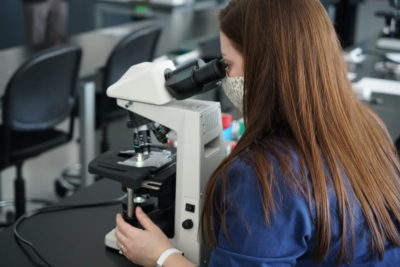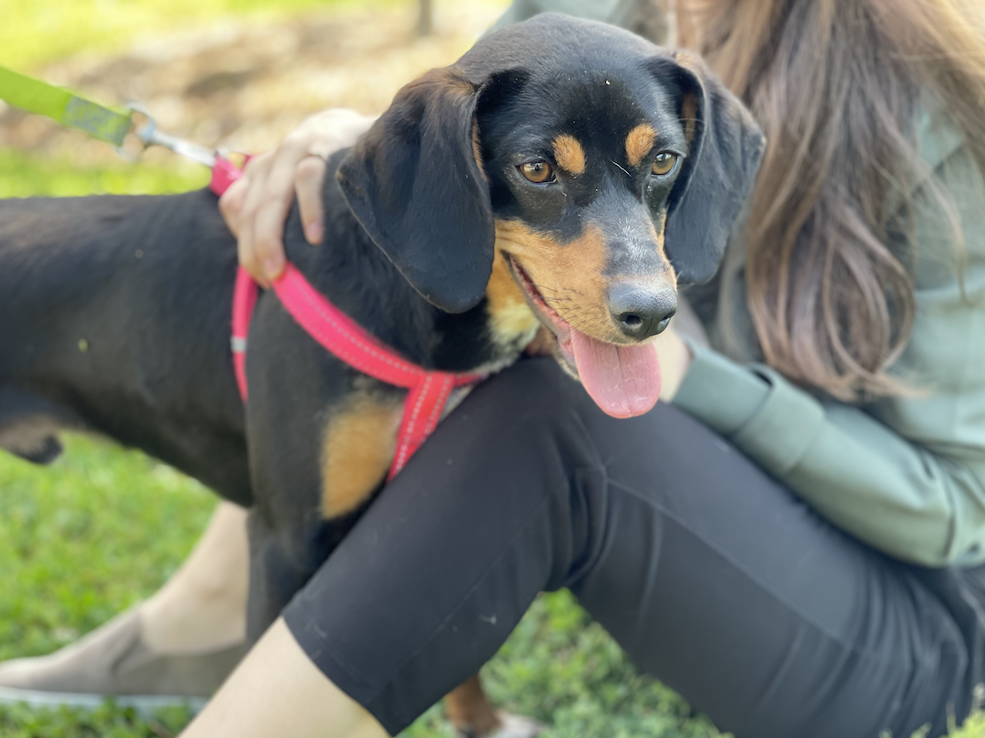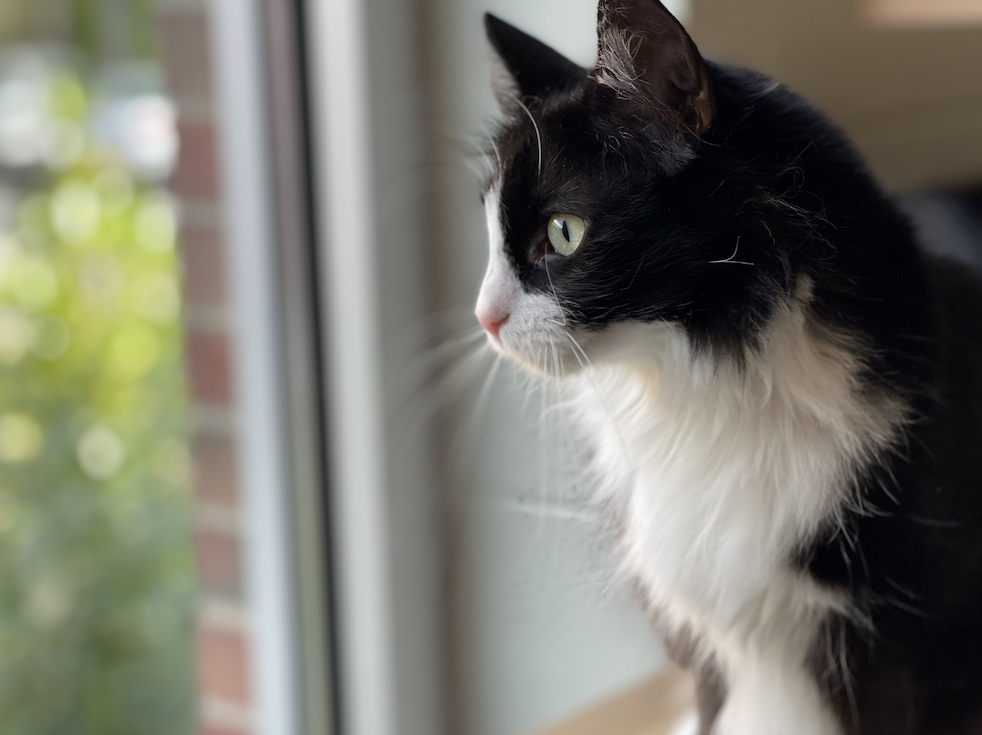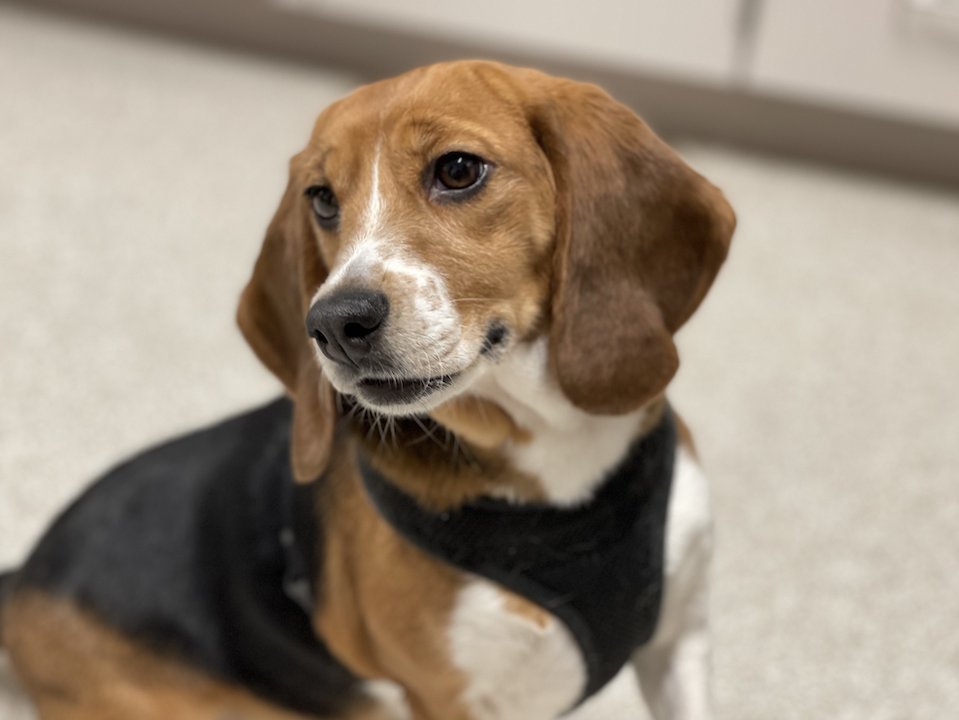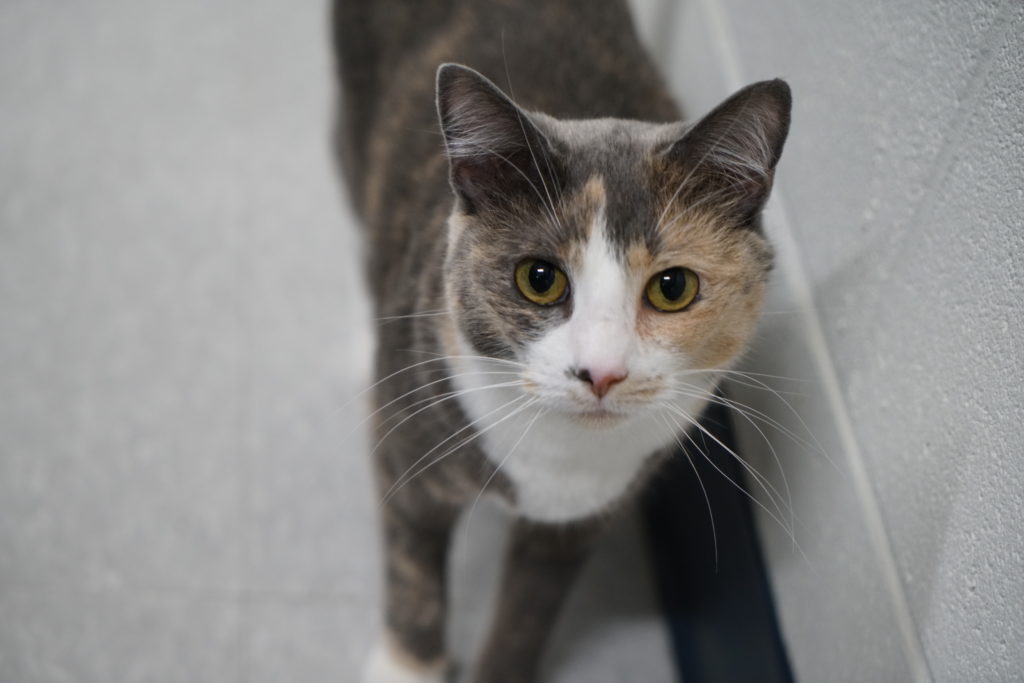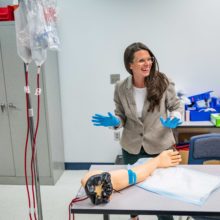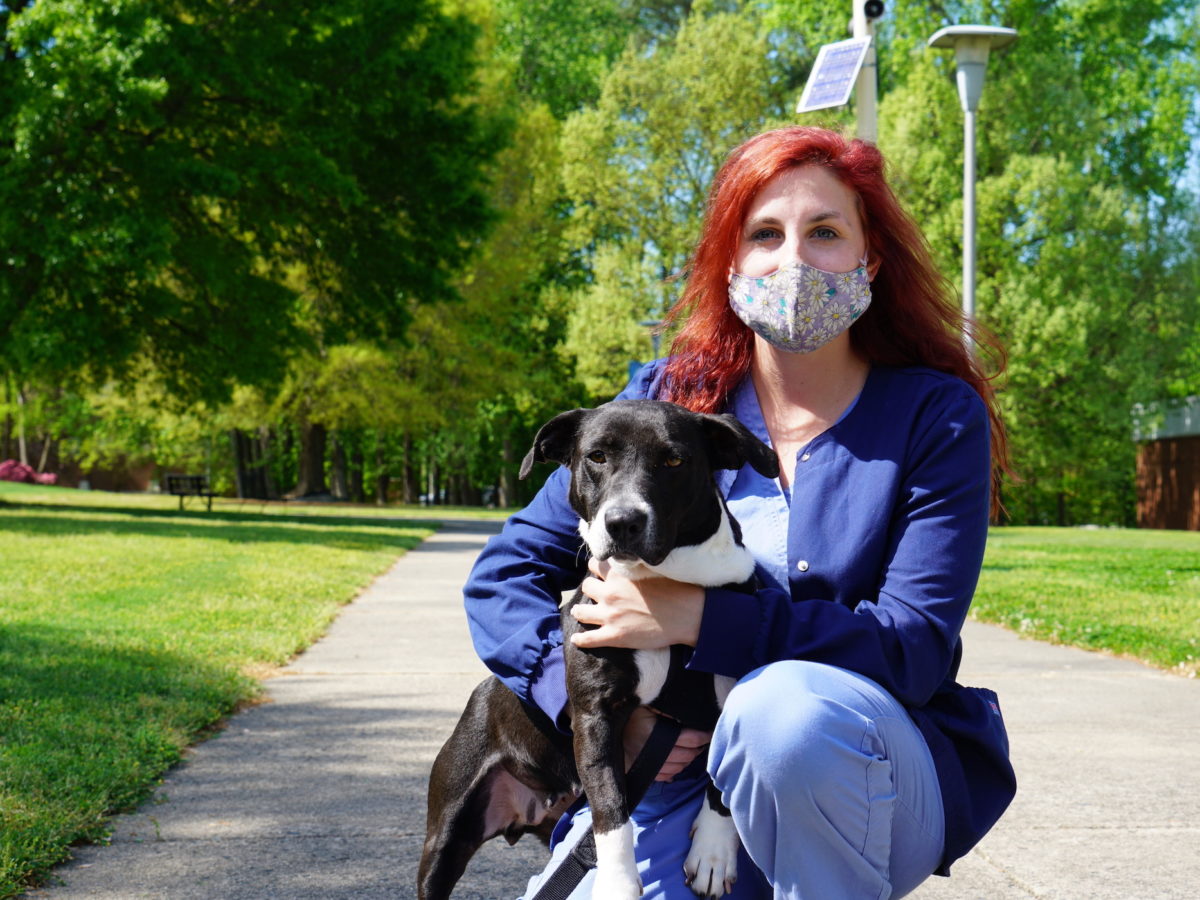
|
|
Alice lights up a room. She attends important meetings and occasionally prances across the table. Sabrina prefers the warm sunlight and is an avid window watcher. We can’t forget Beverly, or Bev for short. She’s got a personality that dazzles and a cute snort to boot. And then we have Jude Paw. Brush stroke eyebrows and a voracious appetite for cuddles and long walks. And no, these aren’t EducationNC’s newest team members.
Alice, Sabrina, Beverly, Jude Paw, and others are part of Central Carolina Community College’s (CCCC) animal rescue group, Cougar Pets. Housed on campus, these furry friends assist students in CCCC’s Veterinary Medical Technology (VMT) program. Each animal helps teach veterinary technician students essential skills that they can one day use with future animals.

Jude Paw. Emily Thomas/EducationNC 
Sabrina the cat. Emily Thomas/EducationNC 
Bev the beagle. Emily Thomas/EducationNC 
Alice the cat. Alli Lindenberg/EducationNC
And the best part? All the animals are adoptable.
In honor of National Adopt a Shelter Pet Day on April 30th, we traveled to CCCC to learn more about the VMT program and Cougar Pets. We met with students, faculty, staff, and animals — naturally.
Sign up for Awake58, our newsletter on all things community college.
A specialized program
The first of its kind in North Carolina, this VMT program is an accredited program that takes animal lovers and transforms them into registered veterinary technicians in two years. During their two years, students have the opportunity to work with a variety of animals, including rodents, rabbits, dogs, cats, cattle, and horses.
Ashley Shorter, a VMT student, chose to attend CCCC to expand on her technical skills.
“I really wanted to understand why I was doing the things I was doing,” she said.
Despite being an animal lover her whole life, Shorter didn’t start off on the animal science path. She worked in retail — first as a cashier in high school and then as a manager at a big retail store.
But when Shorter’s cat became sick, she started to think about a different career path.
“Watching his care and being the client, I wanted to do more,” she said. “I wanted to learn more.”
Soon after, she got a job as a veterinary receptionist and then decided to go back to school to become a registered veterinary technician.
The best part of the program, Shorter said, is the animals.
You really can’t put a value on the dedication that the team here — the staff, the instructors, the adjuncts — have on the care of the animals … I think that really says a lot about the program and what we’re all about … And I think that is one of the biggest things that keeps me really interested in coming to school every day and loving this program.
Ashley Shorter, VMT student at Central Carolina Community College
Hands-on learning
Students in the program learn husbandry techniques, clinical practices, and more, said Justin Pedley, animal facilities manager.
“They learn how to take care of these animals [on] a day-to-day basis,” he said. “They learn how to place IV catheters, run anesthesia, perform dental cleanings, and more.”
Pedley and Jessica Holt, VMT instructor, say this program is really unique.
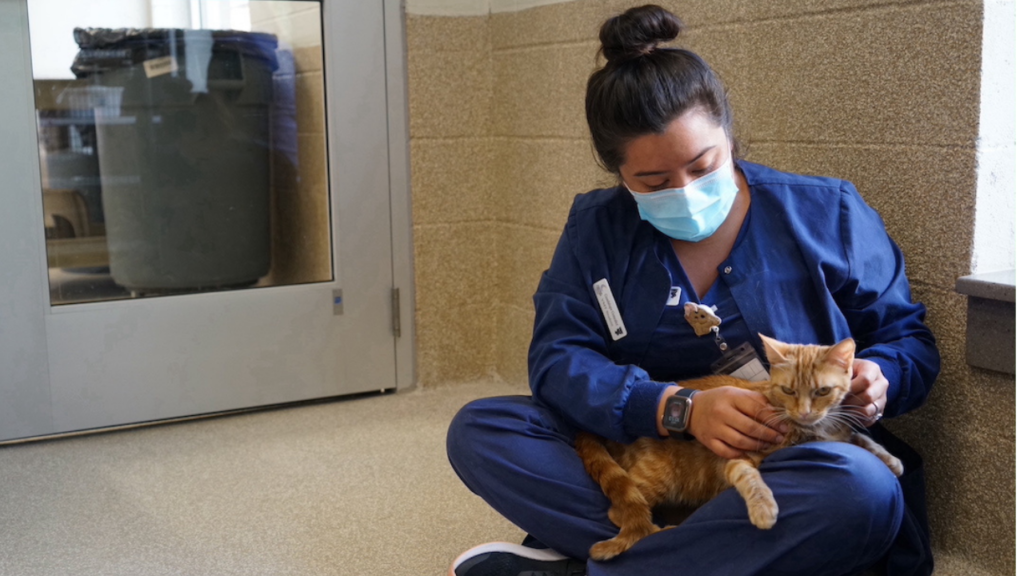
Holt has been a veterinarian for seven years, working in small animal practice for four of those.
“Teaching was actually kind of a surprise for me,” she said.
She had enjoyed training her assistants when she was practicing, and when she saw a teaching position open, she decided to give it a shot.
We asked Holt what the most rewarding part of her job was, and she said it’s a combination of things.
“When teaching, there is always a light bulb moment for students,” she said. Those moments make teaching fun.
The animals are the other part of the combination.
The rescue program
“We get to run Cougar Pets through the college so that the students have animals that they get to help,” Holt said, “and being able to work with these animals and get them adopted into good homes has been a huge reward.”
We’ve got usually somewhere around 60 animals on campus at a time, and they’re all basically my 60 personal pets until they get to their adoptive houses. And we love each of them for all of their little personalities and quirks.
Jessica Holt,VMT instructor at Central Carolina Community College
Much like Holt and Shorter, the veterinary medical technology program was a bit of a surprise for Pedley. Pedley is a former student of the program, but like Shorter, he didn’t start in the animal field.
Pedley’s father and grandfather moved to Sanford in the ’90s to start an engineering company — the same company Pedley would later work at for five years before pursuing VMT. Despite his family owning a dairy farm in Iowa, Pedley didn’t know if working with animals was right for him — mostly because he thought to be in the animal field you had to be a veterinarian. But then he discovered CCCC’s VMT program and realized he was right where he needed to be.
Pedley now runs the day-to-day operations of Cougar Pets. His face beams when he talks about the program.
How to adopt
All the animals at Cougar Pets are rescued from high-kill environments. Once rescued by Cougar Pets, the animals receive medical care and socialization until they are adopted.
When we transfer animals out of shelter situations, we are not only providing invaluable education for our students, but we are also helping to save lives by freeing up much-needed space and giving dogs and cats a second chance at adoption.
Cougar Pets website
Interested in adopting an animal from Cougar Pets? The first step is an application. There is a $50 adoption fee for the public. Every animal adopted from Cougar Pets is up to date on vaccines, spayed or neutered, and microchipped.
Recommended reading
